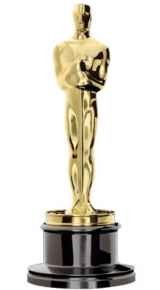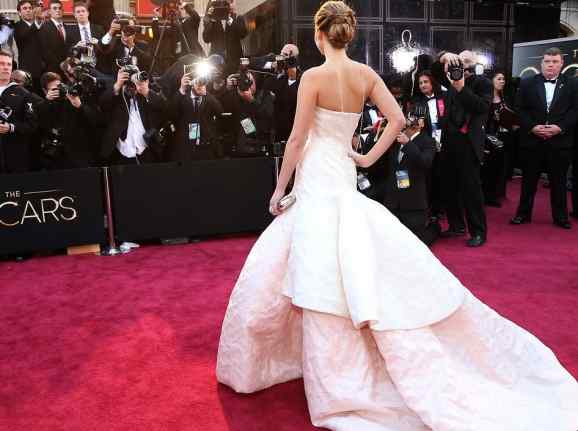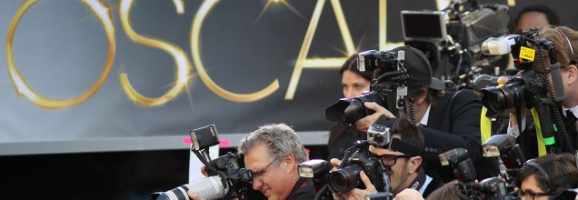Decoding the Oscars
The 87th Oscars have recently been finalized. The Oscars is an annual awards ceremony that honors the distinct and best-performing films and the persons who contribute most significantly. It’s a glamorous forum filled with etiquette and awards for the actors, filmmakers, and talented artists involved in the filmmaking process.

The prestigious awards are presented by “the Academy”. When this word is mentioned, the speaker (or one who thanks the Academy for an award) means Academy of Motion Picture Arts and Sciences, often shortened to a catchy AMPAS.
AMPAS is involved with the larger picture of films. It promotes quality in filmmaking, research in film technology, and is known to hand out numerous other respectable awards. However, the Oscars remain to be the most popular endeavor by the Academy and rightfully so.
Fans and press literally madden over the red carpet to have a look at their favorite stars and celebrities, dressed up in first-rate suits and show-ready dresses, but it’s not arbitrarily decided who will be invited.
So how does it all work? Essentially, the entire jovial celebration that all film-fans eagerly look forward to boils down to this: choosing the nominees by voting and the secondary voting leading up to the red carpet and finally to the opening of the envelopes on the stage.
We’ll learn all about the segments of this wonderful and star-studded ceremony. But first, let’s have a quick glimpse at the popular statuettes.
The Statuette

The Oscars statuette depicts a knight holding a crusader’s sword standing on a reel of film that has five spokes. These spokes represent the original branches of the Academy, namely the Actors, Writers, Directors, Producers, and the Technicians.

Each 8.5-pounds (3.85 kg) statuette, plated with pure 24-karat gold, is composed of britannium, an alloy known for its silvery appearance, composed mostly of tin. The brilliant luster of the 34 cm tall gold-plated statuettes is a splendid work of metal sculpture. It is crafted with precision by the R.S. Owens, a Chicago-based and 73-year-old company that excels in producing fine trophies and awards for popular award ceremonies.
The official statuettes of the Oscars were originally created for the first awards ceremony (then known as the Academy Award of Merit) by the art director of the American media mammoth, Metro-Goldwyn-Mayer (MGM). Cedric Gibbon partnered with the sculptor George Stanley and created the flawless and beautiful model in 1928.
Choosing the Nominees and the Voting Process
The voting process for nominations at the Oscars is quite straightforward. For a given category, the voters from that category choose their nominees. For example, the directors choose the nominees for the best director, and the actors choose their nominees for the best actor.
In this way, the possible list of the bests of the best is shortened to a list of just five ideal nominees who are about to become a milestone in history.
After the nominations are in, a second round of voting is performed. In this round, all the members of the Academy get to vote on the nominees of all the categories. The nominee with the most votes in his/her/its category will take the Oscar home.
As Ryan Errington pointed out, when the Oscars first began, filmmakers and actors were voted by their colleagues. Perhaps it is the reason that this format of voting has been kept intact traditionally, albeit with large-scale changes in the scope of voting and audience. This initial decision has affected the Oscars negatively, some would argue, as this takes out the entire concept of public voting.
Special panels are made for the selection of Foreign Language Film and Animated Feature Film nominations. Also, everybody gets to have a say in the Best Picture nominations, so its vote count is naturally highest and probably the most accurate. And the sample space for the Best Picture nominations is enlarged. Everyone gets to chose as much as 10 entries and the minimum five become compulsory.
You might think that “directors nominate directors” means every director gets a nomination vote. But that’s not how it actually works. The Oscars committee uses ballot papers and online polls to poll the members of the Academy only. The Academy starts polling its members at the middle of the year. So now, colleagues are replaced by Academy members, which can be considered more organized.

Hence, only the members of the AMPAS get to nominate for the various categories. According to various non-Academy sources, the Academy has around 6,000 members.
It might strike as a bit unconventional and limiting, especially when the entire film community of the USA is concerned. For example, polls by popular magazines have the public as an integral part. Given that we now have the mighty power of Internet to harness, it seems a tad more awkward to confine the mass-effect, fate-determining polling just to the members of an organization.
Further, you cannot be a member if you want to. One must be invited by the Academy to be a member, although a review is also considered if one has been sponsored by two members from the concerned branch, or if he or she has been nominated for the Oscars sometime.
But on the brighter side, the Academy is a professional entity. It’s safe to assume that it takes into consideration the choices and opinions of almost all responsible and authoritative personalities and celebrities by its internal method of working and inviting members.
However, the Los Angeles Times did a scathing review of the composition of the Oscars voters. According to the Times, and this result has also been quoted by Wikipedia,
A Los Angeles Times study found that academy voters are markedly less diverse than the moviegoing public … Oscar voters are nearly 94% Caucasian and 77% male … Blacks are about 2% of the academy, and Latinos are less than 2%.
Oscar voters have a median age of 62, the study showed. People younger than 50 constitute just 14% of the membership.
Well, that’s a serious blow to the Academy. Maintaining diversity should be priority for the organization to continue being deemed “professional,” because diversity is a means for getting high-level precisions in polls. The members of the Academy freely confess that it’s hard to get diversity in, and it will take time for the Academy membership to match with the rest of America. (In 1996, the Rev. Jesse Jackson organized nationwide protest over the absence of black and minority Oscar nominees with placards that read “Let’s Look Like America.”)
The disappointment in most voters being old is forgivable though, as older stalwarts of the film industry are arguably more experienced to cast votes for something as serious as the Oscars.
As the Times continues,
The academy calls itself “the world’s preeminent movie-related organization” of “the most accomplished men and women working in cinema,” and its membership includes some of the brightest lights in the film business … The academy is primarily a group of working professionals, and nearly 50% of the academy’s actors have appeared on screen in the last two years. But membership is generally for life, and hundreds of academy voters haven’t worked on a movie in decades.
Some are people who have left the movie business entirely but continue to vote on the Oscars — including a nun, a bookstore owner and a retired Peace Corps recruiter. Under academy rules, their votes count the same as ballots cast by the likes of Julia Roberts, George Clooney and Leonardo DiCaprio.
It seems disappointing to have no rules on revisions or updates on the voter list, because certainly people grow less able to cast a conscious vote as they move on in their social lives (only considering the Oscars voting). I suppose a parallel voting on the Academy’s website by anonymous netizens would give the Academy a sketchy reminder of any inconsistency in their working if some unsynchronized or misaligned opinion is favored more than theirs.
Public votes, it can be debated, aren’t as quality votes as the votes of the people from the same niche. For example, public will favor a director whose film was more enjoyable, but an Academy member from its directors lobby will be more conscious of the details of directing films. Although to think like this isn’t appropriate, as the public and film-lovers are no fools, but it’s natural to assert that the larger slice of public simply ignores details or is ignorant about the technicalities.
Finally, the Academy has maintained its member count around 6,000 since 2012, although it takes in potential new members each year. But looking at the fact that the membership has barely turtled past 6,000 even when there are no removals gives a bitter taste to one’s perception of the Academy being continuously updated with fresh blood.
Red Carpet and the Opening of the Envelopes on Stage

The red carpet, where the celebrities, actors, directors, producers, story writers, technicians, and the musicians are greeted with celebrity anchors, media-persons, and much fanfare, is the delight of the entire ceremony. It’s about much more than just fancy people in fancy cars. Often, the red carpet is an indicator of the fashion trends, especially for the women invitees.
Before the opening of the super-secret envelopes, there’s just burning hot speculation and heavy-budget propaganda by the film producers to promote their nominated candidates. This promotion, like in the form of magazine sponsorships, doesn’t have any effect on the decision of the Academy, but might change the mind of the voters. Undoubtedly, the main benefit of this promotion remains solely to be the promotion of the film, as a film which is worth an Oscar becomes an overnight popularity, if not already.
The votes are counted, quite the manual way, on the night itself. Voters have to pick five candidates according to preference and on collection of all votes, the least voted nominations are continuously eliminated.

Finally on the Oscars stage in the studio of Beverly Hills (Dolby Studio in 2015), the sealed envelopes are opened, ending speculation and fueling the creation of wonderful joy or unpleasant disappointment. People from the industry are chosen to serve the awards after the host calls out their names. Often, the winner announcers are in a pair, and take turns to broadcast a fringe of the fate of the film industry to the world.
The Extensive Media Coverage
With so many sources trying to predict who the Oscars winners will be, does that have any influence on the result? The entire atmosphere of film industry and film-loving public is speculative. Big promotions of nominees, large sections in newspapers, and articles in magazines provide their points of view but end at a speculative cliché that runs as “But nothing could be said for sure, so let’s hold our breath and witness the Show!”

However, even for something as big as a production-company sponsored promotion regarding a nominee, the Academy makes sure there’s no impact on its democratic internal voting process. Further, a production company is allowed to send copies of their film or arrange a special screeening, but all measures are taken to trim down any try to imbalance the democracy or implant propaganda. This includes placing filters on received messages from such companies at the time of voting.
So it can be safely assumed that media coverage or promotions don’t have any impact on the voting process, but what image does the media paint in the mind of the audience? It surely casts a unique persona of the Oscars to the public. Media makes it look glamorous and a ceremony full of celebrities. Its press coverage contributes significantly to its hype and rating, making it one of the best films-related awards show on the earth.
Needless to say, the Oscars is a widely-circulated show, and every detail is looked upon. Therefore it’s natural that there’s a special place for funny moments and celebrity mishaps too, a psychological by-product.
The Oscars, with all its glamor and fame, cannot risk looking like an all-serious, no-nonsense get-together. Every detail is scanned, and fans thrive for witnessing some awkward moment, fun, or celebrity mishap along the way. Further, the anchor and receivers are always in good spirits, and eventually, this leads to proper supply of funny moments.
Fans give good reception to the “fun” and incidentally it’s well encouraged. Some of the fun is handmade, and some (like the tripping of Jennifer Lawrence in 2014) are natural!
The hosts try to create memorable moments for which the installment of Oscars will remain forever in mind. The following images are such pieces to cherish forever.



Maintaining the Much Needed Secrecy
It is interesting to note that the first Oscars, which was a little get-together and not a full-fledged awards ceremony, satisfactorily finalized in a hotel with less than 300 guests. Also, the actual results were handed out three months beforehand!
Well, thankfully, things soon changed.
Now the results were given only to newspapers so that they know the results for publishing them the next morning, which was well respected until one time when the Los Angeles Times announced the winners before the ceremony even began.
Since 1941, the results are processed by PricewaterhouseCoopers and only two of their representatives know the actual result, not even the Academy itself. All the data collected from ballot papers and online polls are directly fed to PricewaterhouseCoopers, an auditing firm with the Oscars for the past 73 years.
So when the announcers say “And the winner is,” we all get to know the results simultaneously, with the exception of two rather lucky persons!
And this process has gone well for more than seven decades without any major hiccups.
Which Films are Eligible?
There are multiple feature film categories, most popular of which is the Best Picture category. For recommendation for the Oscars, a film producer has to fill and submit an Official Screen Credits (OSC) form to the AMPAS. The deadline usually lies in the early part of December for each year. Needless to say, the OSC has to include the full list of credits, and it’ll be officially final for the Academy for considering appropriate awards if chosen.
However, the film has to meet the following criteria:
1. It has to be more than 40-minutes long, otherwise it’ll be a short film or documentary, not a “feature” film.
2. It must’ve been premiered in the standard formats the Academy accepts (35 mm or 70 mm format, or 24-frame or 48-frame per second progressive scan digital format with resolution not less than 1280×720 pixels).
3. The public premiere of the film in a theater is necessary. After all, that’s what distinguishes a film from any other good video.
4. The film’s premiere date cannot be before the year for which the Oscars are being given. For the recently concluded 87th Oscars, the proper calendar year was 2014. That means 2013 films cannot be submitted.

What do you think? Leave a comment.











Thanks for the info, didn’t know it worked that way.
It’s better than the general public voting. Just saying. If it were up to the masses, something like “Frozen” would probably win Best Picture!
I completely agree, because most people are obviously tempted to vote according to the overall feel the film had, not their details.
I second that motion, very good point indeed.
Very true, people are tempted to vote according to the overall feel for the film had. The details to matter too
You mean, People’s Choice Awards?
Sucks if a movie gets nominated in 2nd or 3rd by a huge chunk of the judges but doesn’t get enough 1st’s and is automatically scrapped.
It’s just some statue.
So thats how the voting system works. I just assumed it was done by a bunch of studio heads. Love your informative article.
Interesting and informative, great article!
Well done thank you for researching this material.
Great article, learnt some stuff I didn’t know, especially about the voting aspect! Like the commenters above, it’s hard to imagine the public voting for something like Best Picture, but the racial/age bias of the Academy needs to change.
So the Academy uses the Instant-runoff vote (IRV), alternative vote (AV), transferable vote, ranked choice voting, or preferential voting system. It is also used in Australia, India and Ireland for political elections. The alternative vote is superior than the flawed voting system used in American elections.
A good question is how do screenings for the Oscars leak good quality versions of the movies?
Are Screenplay voting judged by reading the scripts or the quality of the final movie?
By reading the scripts only.
they praise the fims with the biggest budgets and that are up there own arse the most to make sure they pull in the money and are not a flop .. ITS A CROC OF SHIT .. almost every film that ussually wins i go out of my way to avoid . over budget over hyped over acted boring
Many people share that view. It’s also thought that the director’s prestige or display of poverty/uncivilized conditions ease the way to an Oscar. No one knows how much is truth.
Good explanation, they should switch to poker chips for voting.
Great article! Explained really well and really interesting, never even knew it worked like that!
Very interesting insight into the Oscars. I remember watching it recently and the way you portray it is very interesting, especially about which films are eligible. Keep writing!
Thank you and thank you for the inspiration too!
I appreciate this explanation.
You forgot to mention the amount of self-promotion,popularity and studio money that goes into getting nominations/wins. It’s very politically motivated and not objectively based (which is why someone as mediocre as George Clooney can get a “Lifetime Achievement Award” at the Globes)
It is like they pick the best mediocre film that no one hates than anything better but controversial. That’s why movies like Chicago can win best picture too.
I had no idea the Oscar voting worked that way.
I don’t pay attention on any awards. I judge the films I watch and I show my appreciation by watching them over and over again over the course of my life.
Can there be a tie for #1 Best Picture? If there is a tie how is it broken or are all ties awarded Best Picture?
No, in the event of a deadlock, they’ll use tiebreakers, though they don’t use it initially. Further, the voting system works like this: If X gets maximum votes for Best Picture, all ballots with X as their top pick are removed, thus X becomes the Best Picture. This removes the possibility of ties to a high degree.
Why do the movies need to be ranked? I don’t understand that choice in voting.
If they aren’t ranked, how else will a certain entry win?
This was a really great article about the behind-the-scenes of the Oscars. As I’ve gotten older, though, the magic and prestige of the awards has decreased. Because of the selection process, the demographics of the selection committee seem to perpetuate the same type of recipients and nominees throughout the years. Though, it’s not just the Academy Awards, the movie industry seems to lack the representation of Hollywood and the United States in general. It’s just sad to see lots of very talented and deserving people often get overlooked throughout the years in part because of the voters biases.
Excellent.
Thanks for this article! It is important to unpick the Oscar’s functioning and voting methods, most people do not know how big selection ceremonies work. It is important to recognize that the Oscars are not the supreme and unique judge of so called ‘good films’. It a lot more about power relations with production labels and distribution companies, and media.
I care for the movies, not the awards.
Insanely good article. It touched on ask the major issues but still didn’t seen to bias in one direction our the other.
Regarding the membership of the Academy and your point that some voting members are long-removed from the movie business, the Nun referenced the article you quote is Mother Dolores Hart. Before pursuing her Catholic faith she was briefly a film actress in a couple of Elvis Presley films in the mid-’60s. She has stated that she still sees every film nominated for Best Picture and her unique position in the religious community is representative of the kind of diversity to which AMPAS should aspire.
Regarding the eligibility of films for the Oscars, there is another requirement of note which this article fails to mention. Every Oscar-nominated film is required to play in Los Angeles for at least one week in order to meet Academy rules. Due to this quirk, Charlie Chaplin’s 1952 classic “Limelight” received an Oscar for its musical score twenty years after its release — this was precisely because the film did not play in an L.A. theatre until 1972.
I did not research on the mentioned nun. All I thought was that it was a pretty negative remark and had to be quoted in an article on Oscars. Given your revelation, I don’t know whether it’s a good thing or still bad. Because technically, if the procedures of membership are so loose, then there are a thousand other people who could well get membership because they once worked in film industry and watch all movies.
Also, I actually knew the fact of running in LA theaters, but I don’t remember how it slipped from this post.
Thanks a lot for pointing these out! 🙂
All award shows should be abolished because they have nothing to do with talent anymore. They are all about politics and who is the most popular. They are really nothing more than mutual admiration societies.
Hopefully, in time, there will be more diversity in the AMPAS membership.
All actors and actresses who tried their best to perform for their characters deserve an Oscar for themselves. Though there are only limited numbers of people who are finally awarded, the ones who didn’t with. Should give themselves a big applaud after their fabulous performing.
I was never a fan of award shows, but this showed a side that i can respect. That there is actually some thought going into it…
#ButWheresLeosKnight
Awesome article! I am an avid Hollywood and Film fan, and I have been to the Dolby Theatre on Hollywood Blvd where they host the Oscars a number of times. It was an incredibly surreal experience that lingered with stardust, sparkling from where the Red Carpet was rolled out months before. I liked the historical aspect of this article, and finding out about the early secrecies of the ceremony was informative and refreshing!
How about each acting nomenee select a talented woman, person of color, differently abled, or, otherwise marginalized movie making person to accept the Oscar in their place, highlighting the unacknowledged non-white, non male, younger talented individuals who ought to be part of the Academy voting population. Make this a truly historic Oscar celebration!
Much has changed since this article was written…